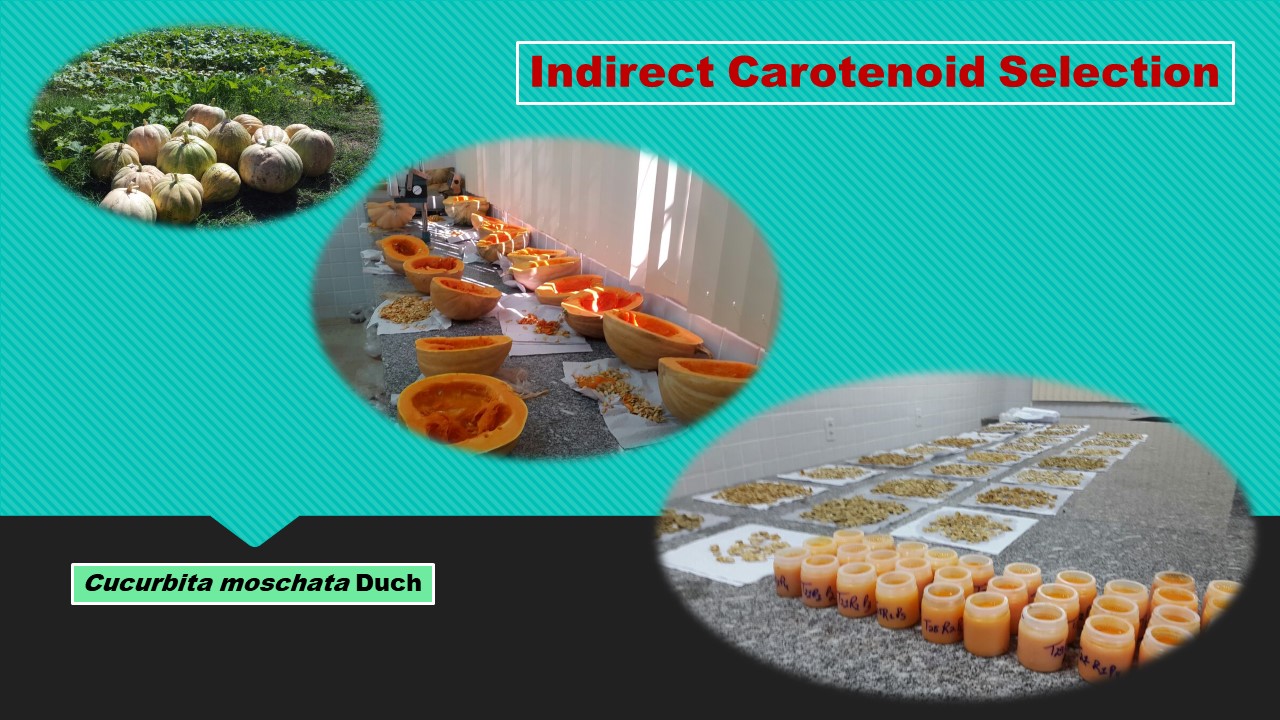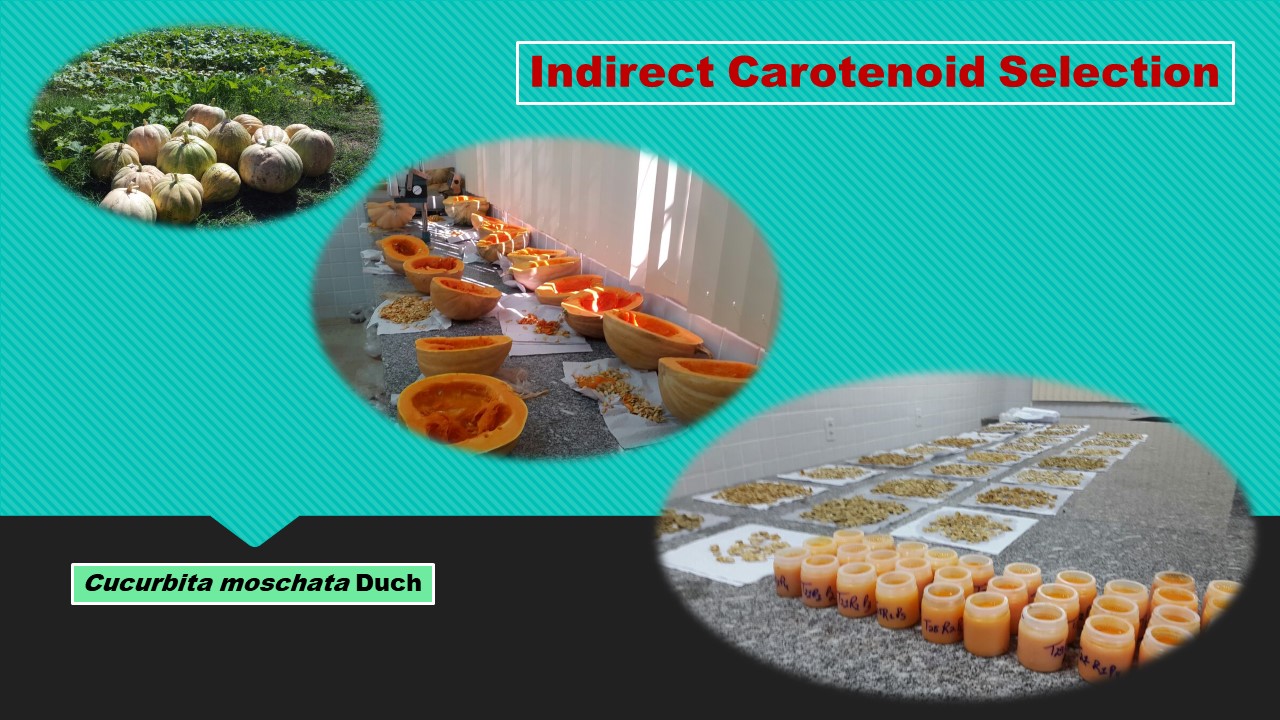Indirect selection for content of carotenoid in pumpkin accessions
Palabras clave:
Cucurbita moschata Duch, colorimetría, correlación, variabilidadResumen

Carotenoid quantification in foods can be performed by various techniques, such as spectrophotometry, mass spectrometry, high performance liquid chromatography, gas chromatography and colorimetry. The objective of this study was to verify the feasibility of indirect selection of total carotenoids in pumpkin accessions. The experimental design was in complete randomized blocks with two replications and three plants per plot. The treatments consisted of 51 Cucubita moschata Duch accessions from the DCAF/UFERSA Cucurbitaceae germplasm collection and a commercial C. maxima Duch cultivar. After maturation, the fruits were harvested and colorimetric and total carotenoid contents were evaluated. Pulp color intensity parameters and hº angle indicated the possibility of indirect selection of accessions with higher total carotenoid contents. The ABO22 access presented higher total carotenoid content under the evaluation conditions of the experiment.
Highlights
- There is variability in the total carotenoid content in pumpkin accessions.
- The pumpkin accessions studied have potential for food biofortification.
- Feasibility of indirect selection in pumpkin accessions for high total carotenoid content.
Descargas

Descargas
Publicado
Cómo citar
Número
Sección
Licencia
Derechos de autor 2020 Revista de la Facultad de Ciencias Agrarias UNCuyo

Esta obra está bajo una licencia internacional Creative Commons Reconocimiento-NoComercial-CompartirIgual 3.0.
Aquellos autores/as que tengan publicaciones con esta revista, aceptan las Políticas Editoriales.










.jpg)




